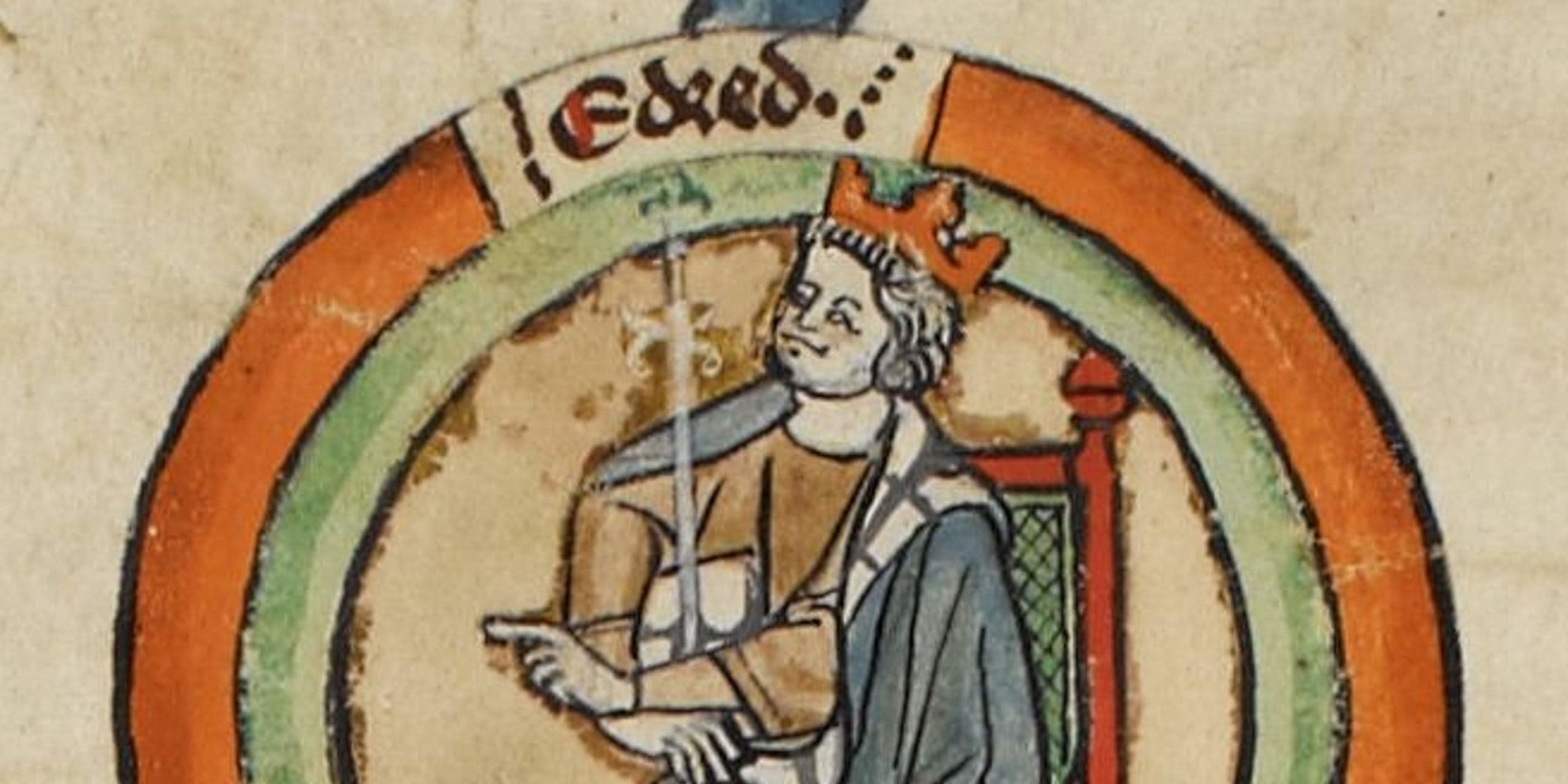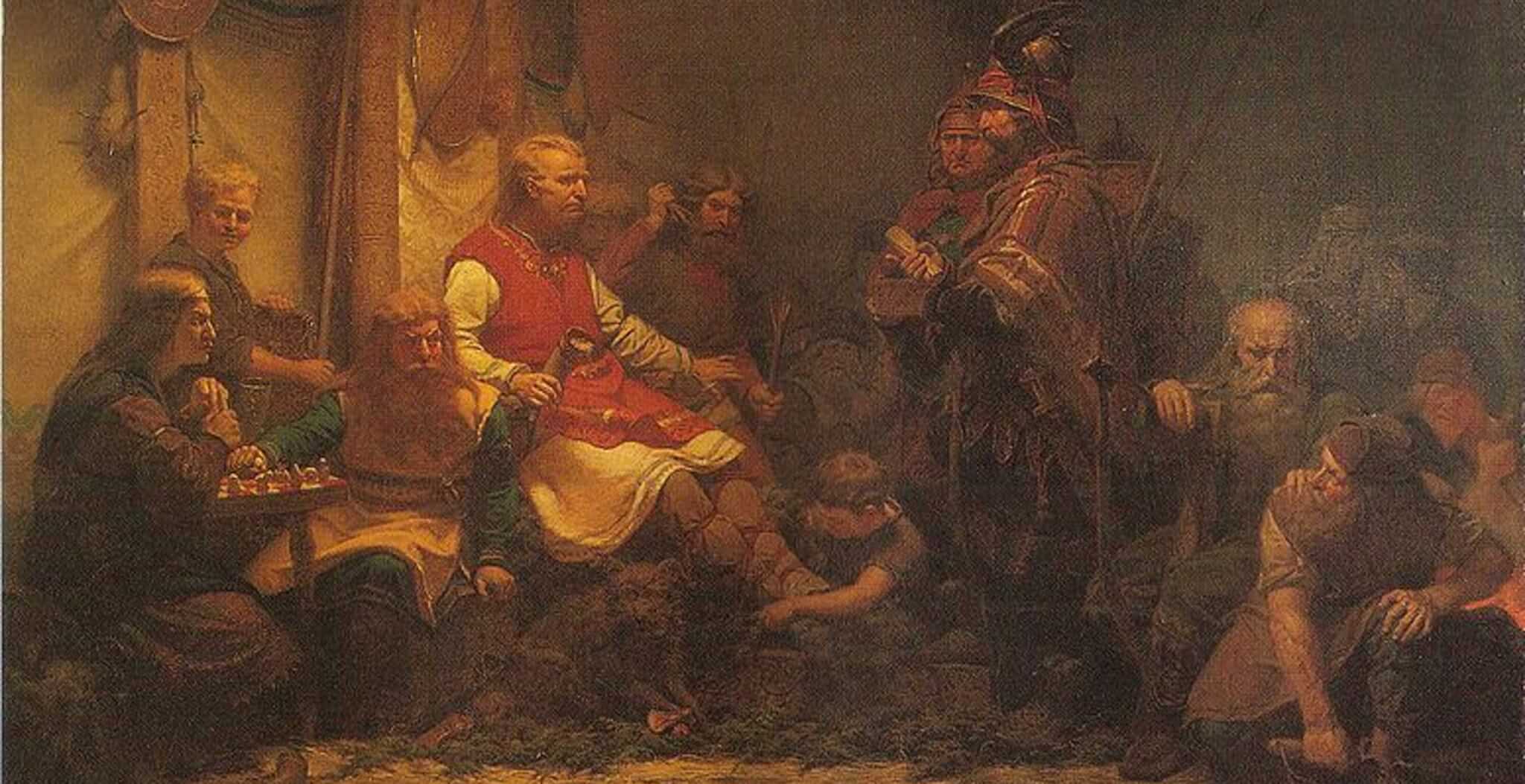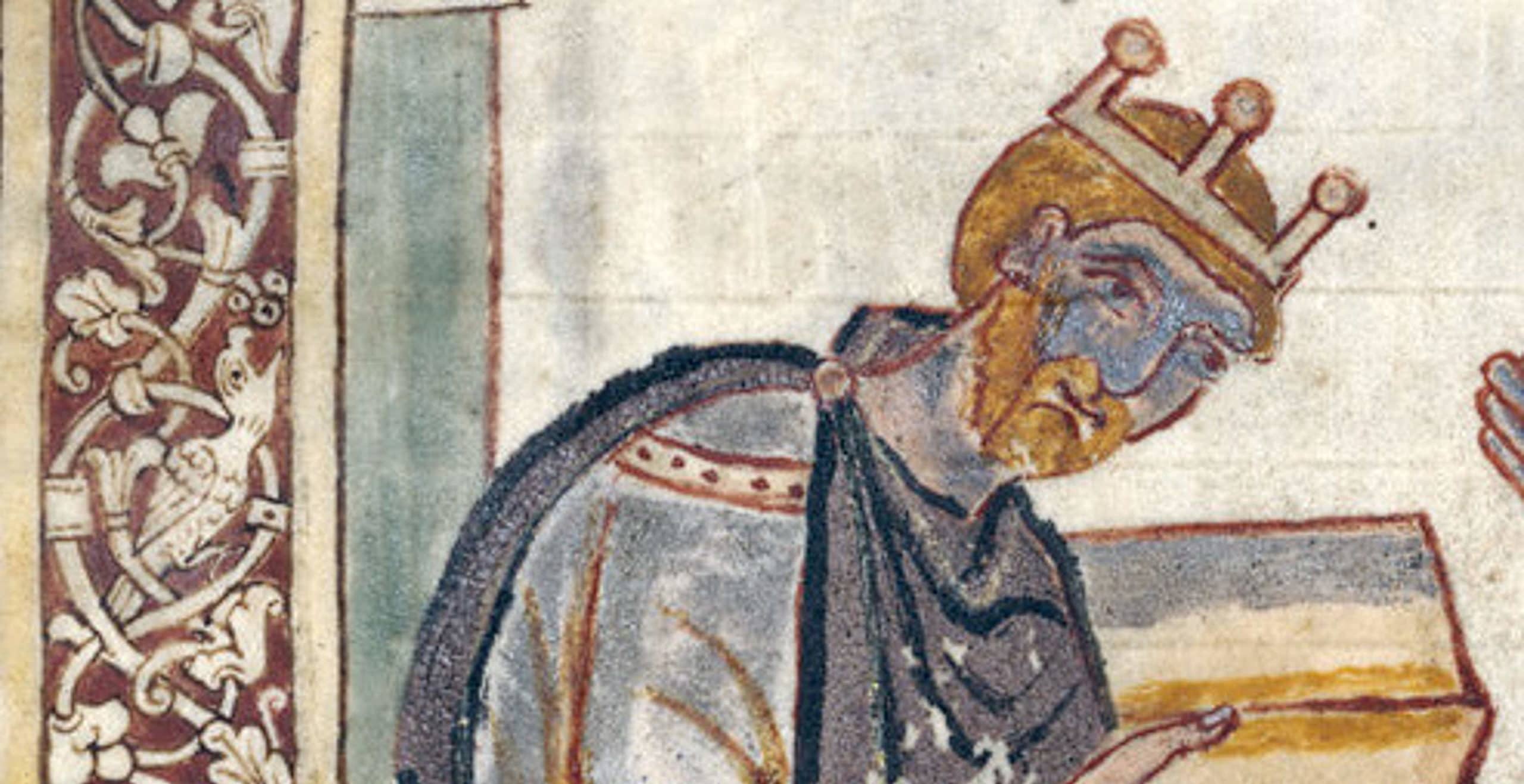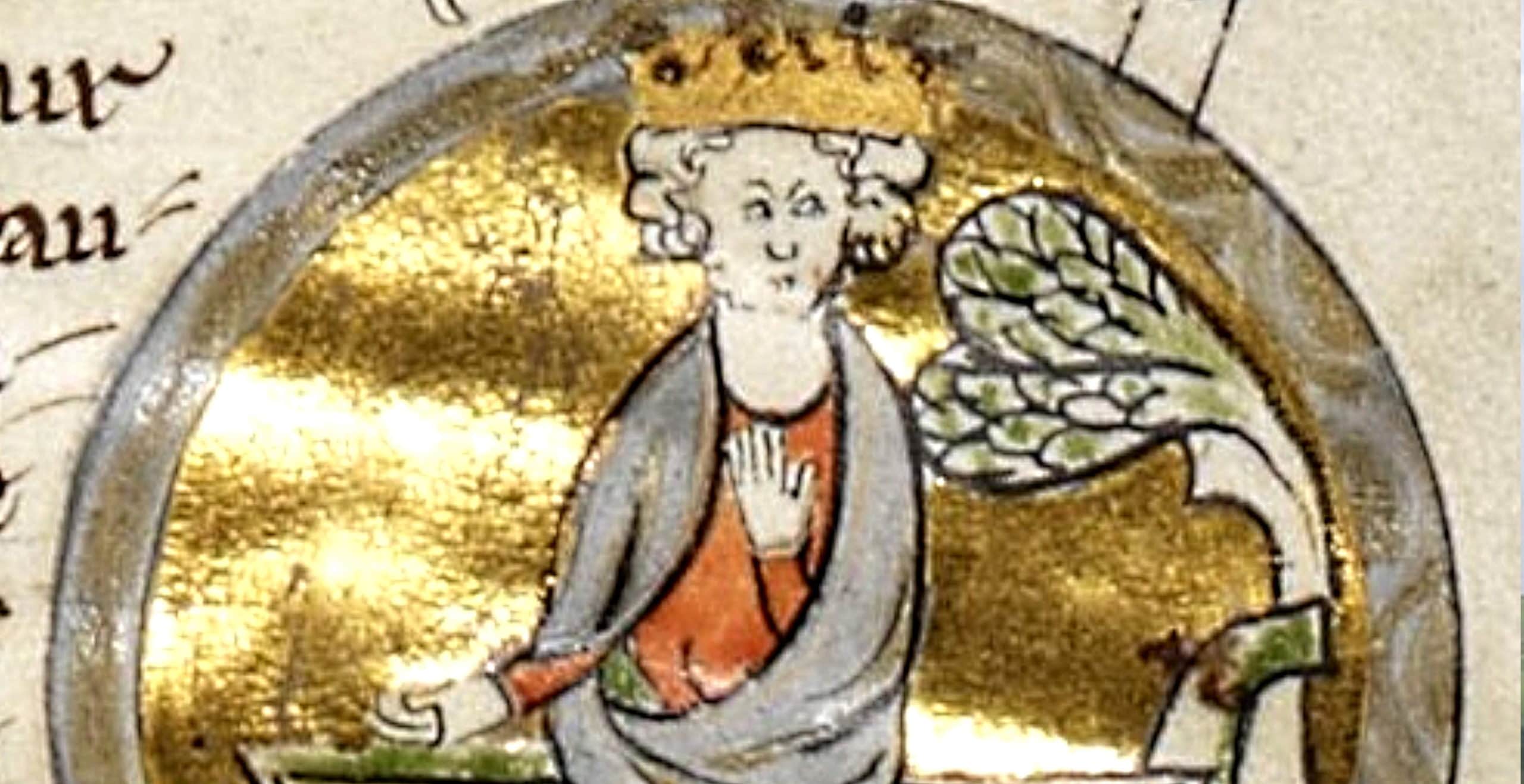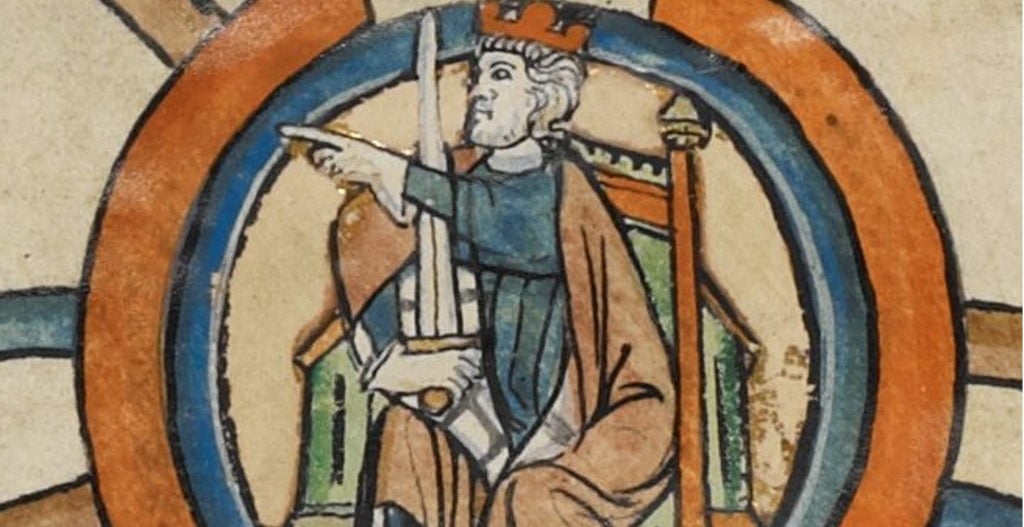On 26th May 946 King Edmund I was murdered in a brawl in Gloucestershire, leaving his younger brother Eadred to succeed to the throne and continue defending it against Viking ambitions.
Eadred was chosen as king by the Witan above Edmund’s own children, as they were still in their infancy and thus too young to inherit the throne.
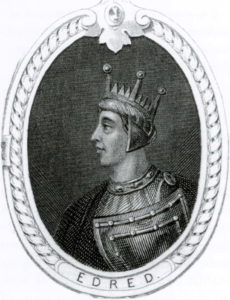
When Eadred became king, he was in his early twenties and whilst he suffered from ill-health which ultimately cut his life short, he proved himself to be a worthy leader who defended his kingdom.
Born around 923, he was the son of Edward the Elder and his third wife Eadgifu, making him the grandson of the famous Alfred the Great.
When his elder half-brother Athelstan became king after their father, Edward the Elder’s death in 924, he inherited a kingdom with territory extending south of the Humber River. During his kingship however, Athelstan was able to conquer the northern Viking stronghold of York and thus pass on a whole kingdom to his younger brothers, Edmund and later Eadred.
Thus, when Eadred became king in 946 he had the responsibility of retaining these conquered lands and fending off the Viking threats to reclaim their lost territory.
On 16th August 946 he was crowned at Kingston-upon-Thames. To assist him in his new role, several of those who had been close to his older brother Edmund when he was king, also remained close royal advisors for Eadred’s kingship. This included Eadgifu, Eadred’s mother, the Archbishop of Canterbury, Athelstan, ealdorman of East Anglia (familiarly known as Half-King) as well as Dunstan, Abbot of Glastonbury. With his reliable retinue at his side, Eadred would trust those around him to support him and later in life, even transferred the responsibility of charters to those he was close to in court.
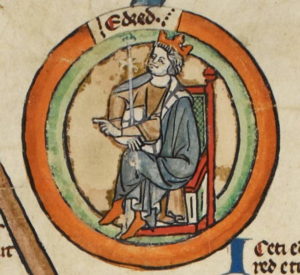
Meanwhile, as soon as Eadred became king he received the submission of northern earls as well as the Welsh rulers. Whilst this bolstered his position, Eadred had inherited a fragile powerbase which could easily be toppled if he did not assert control over all areas of his domain. This would include, as stipulated by the Anglo-Saxon Chronicle, the region of Northumbria which he took control of in 947 and received the submission of various sub-kings across England.
Whilst Eadred received submission from Northumbria, Wales as well as Scottish nobility, sadly for his kingship, this would prove to be merely temporary.
Almost as soon as Eadred had established control over Northumbria, it fell back into the hands of the Viking ruler and former King of Norway, Eric Bloodaxe.
Eric had been invited by the Northumbrians as well as the duplicitous Archbishop Wulfstan of York, as they switched their allegiance to the Vikings thus forcing Eadred to react accordingly.
The king was quick to respond and soon Eadred was marching north with his army in tow, where they burned Ripon and ravaged the region of Northumbria.
Eadred meant business and made it very clear to all those who were doubting their allegiances, that they would face further threats to their homes and lives if they did not distance themselves and end their support for Eric Bloodaxe.
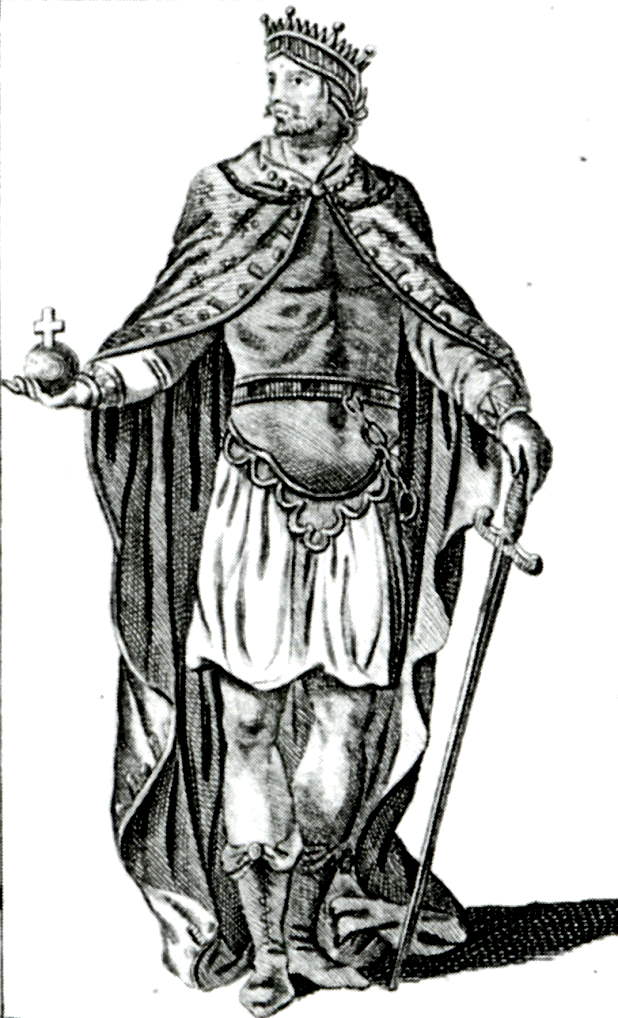
This forceful comeback by Eadred and his men appeared to do the trick as Eric Bloodaxe fled, whilst those around him renounced their support for the Scandinavian king.
Next on the agenda was tackling the source of this treachery, Archbishop Wulfstan of York who had encouraged the change in allegiances.
Eventually in 952, Eadred captured the Archbishop and had him imprisoned for his collaboration with the Vikings.
Meanwhile, with Eadred occupied with the Archbishop, in 950 Olaf Sihtricsson had established himself as the new King of Northumbria, ousted later by Eric Bloodaxe who held the position for two further years.
Eric Bloodaxe would, in his swansong, establish himself as the King of York, however unbeknown to him, he was to be the last Viking King of York as he was finally expelled and killed in an ambush by supporters of King Eadred, allowing the Anglo-Saxon King of England to reassert his authority over the kingdom. Eadred would retain Northumbria for the remainder of his reign, ensuring the lands that he had inherited were safe from Viking attacks.
By 954, Northumbria was now in the safe hands of Osullf, the first ealdorman of Northumbria, previously ruler of Bamburgh, as appointed by King Eadred himself.
With his power successfully restored in the north, this warrior king defended his territory, his inheritance and powerbase with fervour and resilience, ensuring its security for the next generation.
Away from non military matters, Eadred contributed to further developments, including in the monastic reform movement which was still in its infancy. In large part, the English Benedictine Reform owed a lot to the influence of Dunstan, Abbot of Glastonbury who developed a close bond with King Eadred during his reign. Both Dunstan and Aethelwold, Abbot of Abingdon, were key figures in the movement.
Eadred’s support of Dunstan would contribute to this revival and demonstrated his trust in those around him.
In the latter half of his reign, Dunstan would be called on by Eadred to take more responsibility, which gave him the authority to issue charters. Previously, early in his reign, he had trusted his mother Eadgifu with such a task, allowing the king’s mother to give grants to institutions and figures.
Sadly for Eadred who had always been a man of small stature, his continuous health problems began to have an effect on his ability to govern. Whilst suffering with health conditions for many years, eventually he would begin to deteriorate considerably, forcing him to hand over many of the responsibilities to his close confidante Dunstan.
Unfortunately, still only in his early thirties, on 23rd November 955 he passed away and was buried in Old Minster in Winchester.
Upon his death, unmarried and without heirs, the throne passed to his nephew. Eadred had maintained his grip on Anglo-Saxon lands against Viking threats and thus left this responsibility for the next generation of kings to come.
Jessica Brain is a freelance writer specialising in history. Based in Kent and a lover of all things historical.
Published 2nd November 2022
